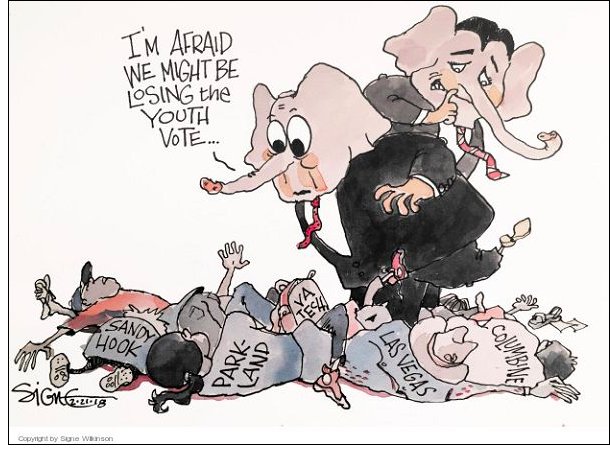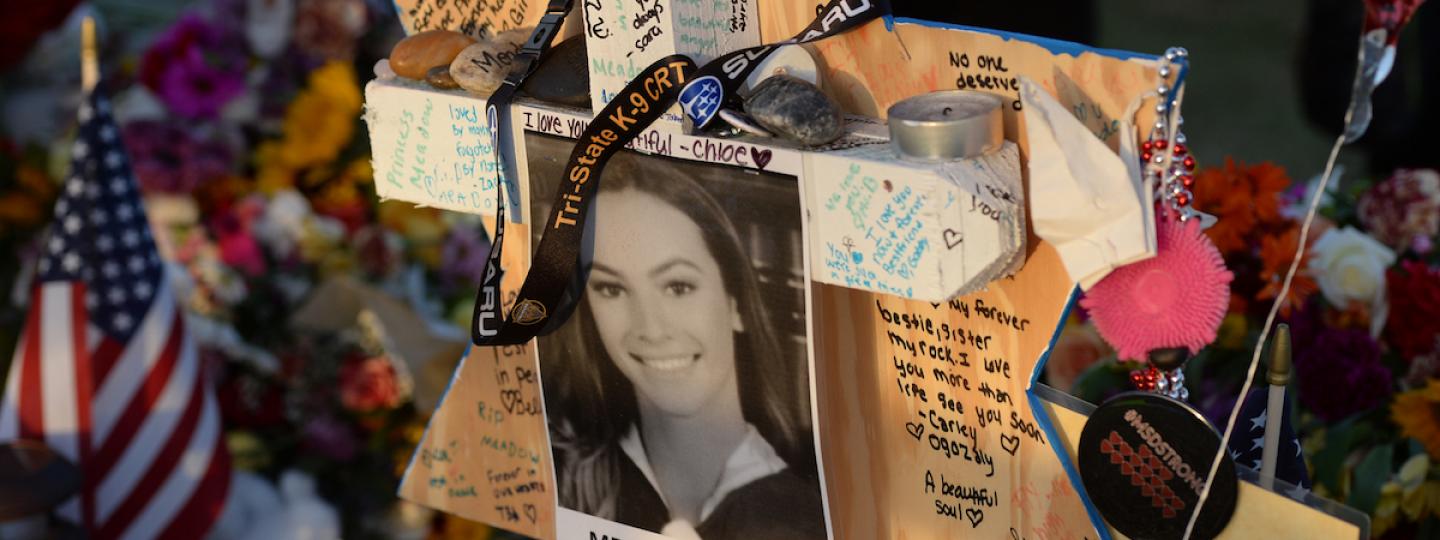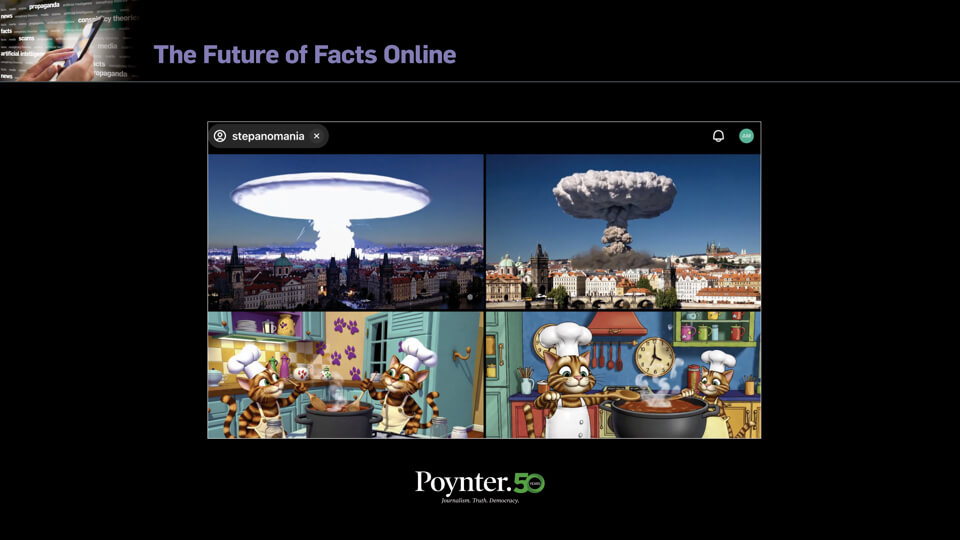As we finish up a week that has seen an intensifying debate over guns in America, we found a wide-ranging array of stories that continue to capture the conversation in ways that illuminate but also frustrate. Here’s what we’ve been reading:
PARKLAND FAILURES: Adding to the heartbreak many in Parkland have been feeling, it was revealed last evening that a deputy heard the gunfire at Marjory Stoneman Douglas High School and rushed to the building. But the campus cop waited four minutes outside as the shooter continued his rampage and "never went in." Turns out that the Broward County sheriff also had several prior warnings that the 19-year-old was a threat and a potential school shooter. The Miami Herald documented them all.
500,000 MARCHERS? Organizers have filled permits predicting up to 500,000 people in Washington on March 24 for the “March For Our Lives” rally following the mass shooting at a South Florida high school. That large a crowd would be in line with last year’s Women’s March on Washington.
A ‘SOCIALIST’ PLOT: The National Rifle Association, led by president Wayne LaPierre, went on the offensive Thursday at the annual CPAC (Conservative Political Action Conference) gathering in National Harbor, Maryland. Not backing down for one moment despite the intense criticism the organization has taken in the wake of the Florida mass shooting, he told the gathering of conservatives "They hide behind labels like Democrat, left-wing, and progressive to make their socialist agenda more palatable, and that is terrifying."
SHE REALLY SAID IT: NRA spokeswoman Dana Loesch, who had appeared measured on a CNN Town Hall meeting Wednesday night, was in full attack-the-media mode at the conference. She accused many in the legacy media of “loving” mass shootings because of the ratings. Here’s her full quote, as reported by Axios: "Crying white mothers are ratings gold to you and many in the legacy media … notice I said 'crying white mothers' because there are thousands of grieving black mothers in Chicago every weekend, and you don't see town halls for them, do you? Where's the CNN town hall for Chicago? Where's the CNN town hall for sanctuary cities?"
CNN’S MOMENT: The Town Hall meeting hosted by Jake Tapper continued to generate headlines Thursday, including this one from the Washington Post: CNN makes history with stunning event on gun violence. Not sure we’d call it stunning, but it was notable for the searing questions and the awkward responses from some of the elected officials present. Sen. Marco Rubio, R-Fla., is quoted directly from the transcript, and it’s a very telling, if rambling, exchange.
WHEN A BULLET FROM AN AR-15 HITS A BODY: Heather Sher, a radiologist who treated gunshot victims from Marjory Stoneman Douglas High School, describes in brutal detail what kind of damage the high-velocity bullet can do in this piece from The Atlantic: “The bullet from an AR-15 passes through the body like a cigarette boat travelling at maximum speed through a tiny canal. … The high-velocity bullet causes a swath of tissue damage that extends several inches from its path. It does not have to actually hit an artery to damage it and cause catastrophic bleeding. Exit wounds can be the size of an orange.”
R-E-S-P-E-C-T: On Sunday, David Brooks of the New York Times wrote a column that elicited derision on the left. “Respect first, then gun control,” was the headline. Here’s the gist of it: “So if you want to stop school shootings it’s not enough just to vent and march. It’s necessary to let people from Red America lead the way, and to show respect to gun owners at all points.” Now the Washington Post’s E.J. Dionne has somewhat of a rebuttal: “Why is only one side in the gun culture war required to show respect?” Here’s his take: “Those in favor of reforming our firearms laws are scolded as horrific elitists who disrespect a valued way of life.” All we have to say is: Discuss.

ILLUSTRATING A MOVEMENT: How have cartoonists reacted to the Parkland shootings and the Never Again movement? Stunningly, it turns out. Pulitzer-winning Philadelphia Inquirer cartoonist Signe Wilkinson found out about the massacre via limited Internet access on a trip to Guatemala. “Bouncing in a van over a mountain to Antigua, I was stewing over the tragedy. Images occurred and rough-sketched two toons,” she emails from Guatemala City. Read more from the cartoonists — and see those cartoons — here.
TEEN POWER: They were resolute. Committed. They dunked on polished politicians — and showed reporters, and the nation, how to hold public servants accountable, writes Joe Berkowitz of Fast Company. “In several minutes on a weekday night, they laid bare Rubio’s central flaw — inauthenticity — more vividly than I ever could in a magazine profile,” marveled Evan Osnos of The New Yorker.
In other news
MAKING A CHANGE: CBS News has promoted Margaret Brennan, the senior foreign affairs correspondent, to become the next moderator of “Face the Nation,” the network’s prestige Sunday morning public affairs show. Brennan, whose first broadcast is Sunday, will be the show’s second female host since it began in 1954. Outgoing host John Dickerson moved to “CBS This Morning,” replacing Charlie Rose.
CENSORSHIP: Hundreds of people in an Iowa town have petitioned its library to ban or label all books with LGBTQ themes. “We won’t roll over!” says the minister leading the protest, according to the Des Moines Register. Thanks, Gary Price for the tip.
FOCUS ON THE OPIOID CRISIS: It wasn’t that long ago that the Trump administration declared an opioids emergency. A task force/committee/group was formed. Then crickets. Flash forward and now the Trump administration is saying school safety is its No. 1 priority. But with thousands of Americans dying of drug overdoses each year (64,000 in 2016, most of them related to opioids), three major media outlets are pushing the issue front and center. TIME magazine is devoting its entire issue this week with a project called “The Opioid Diaries.” From its intro: “Over the last year, photographer James Nachtwey set out to document the opioid crisis in America through the people on its front lines. … The Opioid Diaries is a visual record of a national emergency — and it demands our urgent attention.” Warning, the photos are stark and unflinching. // POLITICO also tackled the issue, noting the myth that doctor-prescribed painkillers are the biggest threat. Illicit heroin and fentanyl are to blame for the current crisis, writes Sally Satel, an addiction psychiatrist. // Which leads us to this short, graphic explainer from the Washington Post about how fentanyl kills.
PROTECTING THE REPORTERS: The Knight First Amendment Institute at Columbia University, seeking to fortify First Amendment freedoms in the digital age, has received $6.25 million in new grants, an amount that will be matched from the Knight Foundation. Half of the new grant money comes from two branches of the Omidyar Group — the Democracy Fund and First Look Media, which publishes The Intercept. The other half comes from the Charles Koch Foundation. The timing couldn’t be better, says Jameel Jaffer, the institute’s executive director. “The freedoms of speech and the press are under extraordinary stress right now.”
‘GET OUT OF MY COUNTRY’: In an excerpt from a forthcoming book, Univision anchor Jorge Ramos recounts his standoff with Donald Trump, his expulsion and eventual re-entry to an Iowa press conference and an unusual promise from the GOP leader, never kept.
NOPE: The Snap redesign was so disliked that 1.2 million people signed a change.org petition to change it back. “We hear you,” says the company. But no dice.
On Poynter.org today
- Fake Miami Herald screenshots are stoking fears of more school violence
- Spotify for news? $5-a-month subscription service snags Gannett as investor, will begin on sites like MSNBC and Slate
- Yo! The Sylvester Stallone flaw in Facebook’s fact-checking tool
Want to get this briefing in your inbox every weekday morning? Subscribe here.






